Three Dramatic Conversions
"I have left all for God; He alone is enough. O Thou Who didst create me, have pity on me." - Ève Lavallière
Here are three incredible stories of conversion. All three of these people were immersed deeply in lives of great sin, and all three had dramatic conversions that resulted in dedicating the rest of their lives to penance in atonement for their past.
As I was putting this post together, I realized for the first time that they all lived at the same time.
I also noticed for the first time that Dominican priests all played a role in their conversion: Bartolo was brought back into the Church by a Dominican priest and became a Dominican Tertiary; Joseph Dutton was brought into the Church by a Dominican priest; and for Eve, although the priest who brought her back to the faith was not a Dominican, it was by reading a book written by a Dominican that grace entered her heart and was changed.
Ève Lavallière (1866 –1929)
French Actress turned Pious Penitent
Ève Lavallière, a renowned French stage acress, reached the pinnacle of her fame in 1916. She was the talk of Paris, the celebrated comedienne of her time. She was so beautiful that artists clamored to paint her. She was dressed by the fashion designer, Paul Poiret, and admired and exalted by fellow actresses. She resided in a lavishly decorated home in Paris. When she performed on stage, it was before packed and adoring audiences, including royalty. She appeared to have the world at her feet.
"Gold ran through my hands, I had everything the world could offer, everything I could desire." said Eve. "Nevertheless, I regarded myself as the unhappiest of souls." Eve was plagued by a terrible darkness within her. "As a child, I knew not what the love and care of a mother was. My life was tears and suffering from the time I reached the age of reason."
At birth, Ève had been sent away to live with a family of peasants until she reached school age, at which point her parents enrolled her in a private school. Her father was an alcoholic who flew into fits of rage, so home and family life were turbulent. On one memorable day that changed her life forever, Ève witnessed her father shoot her mother with a gun. He allegedly pointed the gun at Ève as well, but did not shoot. Instead, he shot himself.
All the fame and riches in the world could never erase the darkness she carried within her. Despite her rise to fame and excessive riches, her life spiraled out of control. She was depressed, suicidal, and dabbled in the occult, as was fashionable at the time. She fell into a life of sin, becoming the mistress of a local marquis. She had opportunistic sexual liaisons with a variety of men who rewarded her sexual favors. Yet deep down, she was miserable.
In 1917, Ève needed a break. Before a big performance in the United States, she went to rest in the quiet French countryside, away from the agitation of the world. She was renting a house in Chanceux, near Tours, the landlord of which happened to be a Catholic priest named Fr. Chasteigner. She had with her a woman named Leonia, a Belgian refugee that she had met in Paris two years earlier and who became her lifelong friend and confidant.
When the priest noticed Ève was absent from Sunday Mass, he went to talk to her about it. She promised not to miss Mass again and attended the following Sunday. But Fr. Chasteigner recognized her lack of devotion. He said to her, "What a pity that you have no faith."
Ève revealed to the priest that she had experiences in spiritism in which she had conversed with and gave her soul to the devil in return for "what she most desired." She said, however, that he had failed to fulfill his promise, and Ève denounced him as an imposter and a liar. She concluded that spiritism was a lie and the devil didn't exist.
"I assure you that he does exist," said the priest, and he went away without further comment. This was enough for Ève to begin pondering the devil and God. She lay awake that night pondering the existence of the devil. And, she concluded, if the devil does exist, then God exists. And if God exists, what am I doing with my life?
The priest returned the next day, saying that he had spent the night in prayer for her and had even offered a Mass for the intention of being inspired of what to do for her. He had decided to bring her a book. It was The Life of Saint Mary Magdalene by Fr. Henri Lacordaire, O.P. "Read the book on your knees," the priest instructed her. "And you will see what God can do with a soul such as yours."
According to Leonia, Ève situated herself in the kitchen, with the doors open so the servants could hear, and she read aloud in a clear voice. Remember that Ève was an extremely talented performer; her voice was exceptional, and she could use it to command every emotion. We can only imagine with what emotion she must have read this book aloud, and the effect it had on those who heard her. "Enthusiasm seized her," said Leonia. "Never had I heard her read with such conviction. Sitting at her feet, I began to cry." She said Ève’s voice was broken by sobs as she read.
The next Sunday, Ève attended Mass again, but according to Leonia, her disposition was completely changed. Leonia said she told Ève that day that she desired to make her first communion because, despite being 23 years of age, she never had. Ève was supportive of her friend and said she would arrange it - and that she would receive Holy Communion with her!
Ève was repentant of her sins and eager to make a confession. So for an entire week, the two friends prepared themselves to receive the Sacraments. Leonia recounts that they studied and memorized the catechism lessons, learned to pray the Rosary, and Ève was insistent on writing down all her past sins for her general confession, to ensure she didn't forget anything.
Confessing her sins and receiving Communion was a joyful and radiant moment for Ève. "My resolution is made," she wrote, "from now on, only Jesus has a right to my life, for He alone gave me happiness and peace."
In that church at Chanceaux, there can still be seen an engraved stone: "In this church Ève Lavallière converted and received Communion on 19 June 1917, brought back to God by Fr. Chesteigner."
Ève left Paris, distributed her immense fortune to the poor, and went to live in a remote place. She became a penitent soul, taking to prayer and mortification to make reparation for her previous life. She asked God to send her much suffering in order to atone for her past sins and to ascend to the height of virtue and sanctity. On a pilgrimage to Lourdes, she was seen praying the Stations of the Cross barefoot in the pouring rain.
She tried to join a convent but was repeatedly rejected due to poor health. Instead, she became a third order Franciscan, and for a time was a medical missionary in Tunisia, until poor health forced her to give up this work. She and Leonia led a secluded life of prayer, meditation, and suffering in their home, which Ève had painted white and hung blue curtains in honor of Our Lady.
Ève had been one of the most well-known actresses in the world; now she was living as a hermit. She once sang in theatres, now she sang only at Mass in the village church. She used to be dressed by the best fashion designers, now she wore black frocks and coarse sackcloth garments. Naturally, her disappearance created quite a buzz. Journalists were always seeking to find out what happened to Ève. But no one was allowed an audience in the house. When reporters and curious people would come asking questions, the maid would tell them, "This house is not an ordinary house. It is a cloister." Since her poor health prevented her from joining a convent, she secluded herself in her home, only receiving the village poor who came to her for help.
At the end of her life, her once beautiful features became the means of expiation for past sins. She suffered a terrible illness, but what it was, we don't exactly know. Whatever pain she endured, she offered it all up in expiation, even rendering thanks to God: "I have sinned through these faculties, good Lord. I thank Thee for permitting me to expiate my sins through this suffering."
She must have granted a journalist an audience, because in 1929, the same year that she died, a Parisian newspaper published the following interview with Ève:
"Do you suffer a lot?"
"Yes, horribly."
"Have you any hope of being cured?"
"None. But I am so happy! You cannot imagine how great is my happiness."
"Even with so much suffering?"
"Yes, and because of it. I am in God's hands. Tell my friends of days gone by that I am the happiest person on earth."
In her last letter, she wrote: "All my being and all my will are turned toward this last end: to love God, Who loves me so much in spite of my past and present miseries."
Ève died on July 10th, 1929, at the age of 63. Upon her tomb were engraved these words at her request: "I have left all for God; He alone is enough. O Thou Who didst create me, have pity on me."
Blessed Bartolo Longo (1841 – 1926)
Satanic Priest turned Apostle of the Rosary
When Bartolo Longo was ordained a priest, his family did not attend his ordination. They were not even aware of the ordination. Even if they had known about it, they would not have come. This is because Bartolo Longo was not ordained a Catholic priest; he was ordained a priest of Satan.
Bartolo Longo was born in 1841 in Latiano; a small town near Brindisi in southern Italy. He was born into a wealthy family of devout Catholics, living in a large house with servants. Bartolo described himself as a child in these words: "A lively and impertinent imp, sometimes rather a rascal." At the age of six, Bartolo attended a boarding school where he was taught by priests. He played the piano beautifully and had a passion for fireworks. He had a vibrant personality, and a fiery temper.
In 1851, when Bartolo was only 10 years old, his father died, and his mother remarried a lawyer. Bartolo decided to pursue the profession of his step-father and went to the University of Naples to study law. It was while he was immersed in study at the university that his faith waned and he drifted from the Catholic Church. The university proved to be a dangerous place for his impressionable mind.
During the 1860s, there was a strong nationalistic movement going on in Italy, and Bartolo was caught up in the fervor of political ideologies sweeping through the nation. He was fascinated by and attracted to the political movements surrounding him. Due to his anti-Catholic professors, he became radically opposed to Catholicism, and like them, he developed a particular disdain for the papacy, the priesthood, and Dominican Priests. Caught up in the fervor of the times, Bartolo later wrote of that time, “"I, too, grew to hate monks, priests and the Pope, and in particular [I detested] the Dominicans, the most formidable, furious opponents of those great modern professors…”
It was during this period of his life that Bartolo says he "became ensnared on the enticing hook of so-called freedom of conscience and thought." Atheism and doubt surrounded Bartolo, and he entered a time of deep interior darkness. He was searching for meaning in life, but only in worldly places.
At this time, there was a growing popularity of spiritualism across Europe and many students at the University were experimenting with occult practices. Bartolo also began to visit mediums and attend seances, attempting to communicate with the dead in order to receive spiritual messages. During these occult ceremonies, Bartolo thought that he would find the answers he was seeking. He relates in his own words that he "believed he finally found the path that would lead him to the truth."
In reality, it led him into contact with evil spirits. Eventually, Bartolo desired to communicate with the spirits directly instead of through a medium, and he therefore joined a satanic cult. Now he was fully immersed in the occult, and he was ordained and consecrated a priest of Satan. Leading up to his ordination, Bartolo underwent such rigorous fasting to the point that he was reduced to skin and bones. He later recalled that during the ceremony he had gone into a trance and communicated with evil spirits, and at the moment of his consecration there was an enormous clap of thunder. He described that during the ordination he had "promised his soul to the demon, who then shook the walls and manifested itself with blasphemous shrieks."
From that time on, Bartolo was enveloped in depression, anxiety, and confusion. He exercised his "priestly" duties by officiating at Satanic rites, by speaking out against Catholicism, and corrupting others by preaching error. He said that he felt the constant presence of a dark being with whom he communicated daily.
At the University of Naples, Professor Vincent Pepe (one of the few remaining Catholic professors at the University) confronted Bartolo. The life of sin that Bartolo was living was taking a physical toll on him. Pepe told Bartolo that if he continued down this path, he would end up in an insane asylum and be damned forever. Bartolo could not deny his poor mental and physical health, so he was convinced by Pepe to go see a Dominican priest named Fr. Alberto Radente.
Fr. Radente met with Bartolo every day to talk. These discussions between a Satantic priest and Dominic priest lasted for three weeks, and they ended with Bartolo renouncing spiritualism as a deception and falsehood. He agreed to go to confession with Fr. Radente.
In 1865, on the Feast of the Sacred Heart, Fr. Radente gave Bartolo Longo absolution and allowed him to receive Communion. Bartolo had returned to the Catholic Church and was free of Satan's death grip on his soul.
Back in the grace of God, Bartolo's soul was clean and his mind was free. Professor Pepe allowed Bartolo to move in with him and introduced him to faithful Catholics. Bartolo began to pray earnestly for guidance as he sought out his vocation. He considered both married life and the priesthood, but discerned with a spiritual director that neither was God's will for him. His vocation was to be a single layman in the world.
As he was seeking his vocation, he prayed the rosary daily and developed a devotion to Our Lady. He began to study to become a Dominican Tertiary, and in 1871, on the feast of the Holy Rosary, Bartolo was received into the Third Order of St. Dominic and given the name Brother Rosario. He made a promise of celibacy in order to serve God with an undivided heart.
Bartolo had kept up his law practice. He traveled to Pompeii for business on behalf of his client, Countess Mariana di Fusco. While there, he was shocked at the condition of the poor and illiterate who were ignorant of Church teaching and were caught up in superstition.
Bartolo himself was struggling with paranoia, depression and anxiety. He fell into despair as he began to doubt God's mercy. He feared that his consecration as a Satanic priest would bind him to Satan forever, and so strong was his hopelessness that he had suicidal ideations. He wrote: "One day in the fields around Pompeii, I recalled my former condition as a priest of Satan. I thought that perhaps as the priesthood of Christ is for eternity, so also the priesthood of Satan is for eternity. So, despite my repentance, I thought: I am still consecrated to Satan, and I am still his slave and property as he awaits me in Hell. As I pondered over my condition I experienced a deep sense of despair and almost committed suicide.”
But in the midst of this struggle, he remembered Mary's promise to St. Dominic, that whoever promotes the rosary will be saved: “Then I heard an echo in my ear of the voice of Friar Alberto repeating the words of the Blessed Virgin Mary: 'One who propagates my Rosary shall be saved.' Falling to my knees, I exclaimed: 'If your words are true that he who propagates your Rosary will be saved, I shall reach salvation because I shall not leave this earth without propagating your Rosary.'"
In that moment, he vowed to spend the rest of his life propagating the rosary, knowing that it was the way to save his soul, and to save the souls of others.
Bartolo had found his vocation. The promotion of the rosary and the restoration of the Catholic faith in Pompeii became his life mission. He wrote to Mary, "If it be true that you promised St. Dominic that whoever spreads the rosary will be saved, I will be saved, because I shall not depart from this land of Pompeii without having spread your rosary."
With the permission of the Bishop and the financial support of the Countess, he began to restore the church building in Pompeii and to instruct the people in the teachings of the faith. In 1873, Bartolo organized a Feast of the Rosary to be celebrated annually in Pompeii and began construction of a Shrine dedicated to Our Lady of the Rosary.
Bartolo dedicated the rest of his life to many works and missions, tirelessly working on projects. Not only did he construct the shrine which eventually became a basilica, but he constructed a city around the shrine to help the poor. He was a writer, publishing books on the Rosary and composing prayers. He started a magazine and founded a group of Dominican nuns to educate orphans. He opened a book shop and bindery to teach the orphans how to work and earn money.
He was awarded the papal knighthood of the Order of the Holy Sepulchre.
In 1885, Pope Leo XIII advised Bartolo to marry his widowed friend, the Countess. The two had been living under the same roof, and the pope’s advice was for the purpose of avoiding scandal. Despite being united in marriage, they maintained a chaste union because Bartolo had made a promise of chastity. They worked together doing charitable works for the rest of their lives. In 1906, they gave all of their property to the Holy See. Bartolo continued working at the shrine in Pompeii until he was 80 years old.
On October 5th, 1926, at the age of 85, during his last hours, he prayed the rosary surrounded by the orphans whom he loved so much. He died peacefully while Mass was being offered in the adjacent room.
His dying words were: "My only desire is to see Mary who has saved me, and who will save me, from the clutches of Satan."
Servant of God Joseph Dutton (1843 – 1931)
Ira Dutton was born into a Protestant family in Stowe, Vermont (in United States of America) on April 27, 1843. His father, Ezra Dutton, was an entrepreneur who dabbled in various trades. His mother, Abigail, was a schoolteacher.
In 1847, the Duttons moved to Janesville, Wisconsin, so that Ezra could pursue yet another business venture. Ira was interested in all things military and quickly became a member of the Janesville Zouave Corps. When the Civil War broke out, Ira was just 18-years-old and the Janesville Zouave Corps was quickly enrolled as Company B of the volunteer regiment. Just eight days later, Ira was appointed regimental quartermaster sergeant. His success and promotions in the military continued at a rapid pace. Although he was young, he proved to be of exceptionally high character and thoroughly qualified. He was trusted by his superiors and given immense responsibilities.
After his faithful service in the war, Dutton remained in government service by overseeing the task of pinpointing and retrieving the scattered remains of soldiers who had died while serving. Each body of a Union soldier was placed in a coffin and hauled to national cemeteries established at Shiloh and Corinth.
On January 1, 1866, at Mt. Vernon, Ohio, Dutton married a woman with a bad reputation for infidelity. The marriage quickly failed after she spent all of his money and ran off with another man in 1867. He didn’t file divorce papers until 1881.
Over the next two decades, he spent his time working at a variety of jobs. The 1870 U.S. Census cites his home as Memphis and his employment as railroad clerk. And from 1875-1883, he worked for the government settling war claims.
But during all this time, Dutton was drinking heavily. Although successful in every field of work he tried, he was nevertheless a functioning alcoholic.
It was in 1876 that he became disgusted with his life of sin. He vowed never to drink again and remained sober for the rest of his life. After his pledge to drink no more, he desired to make reparation for his misdeeds. At the age of 40 and now sober, he was seriously considering his purpose in life.
Through the influence of Catholic friends he became interested in Catholicism, and very soon he had a radical religious conversion. His friends introduced him to a Dominican priest, Fr. Joseph Kelly, who prepared him for baptism. He was received into the Catholic Church on his 40th birthday. He changed his name to Joseph, after his favorite saint, and resolved to begin a new life of penance in reparation for his past sins.
“I lived for some years a wild life and felt that I should make some sort of reparation for it,” he told his friends. “Throughout my life I was a firm believer in thoroughness in everything, and so I decided that my penance should be thorough; in other words, that the remainder of my life should be devoted to that, and to nothing else.”
And so, seeking this thorough life of penance, Joseph we to live among the Trappist monk at the Abbey of Gethsemani in Kentucky, adopting their humble and ascetic lifestyle.
Yet after spending 20 months with the Trappist monks in Kentucky, he left the monastery without taking his vows, desiring a life of even greater penance.
Dutton then traveled with a Redemptorist priest friend to New Orleans. It was here, in New Orleans, that he discovered a Catholic newspaper’s account of Father Damien’s work among the lepers in Molokai. In reading about Fr. Damien and his work, he believed he had found his vocation. This was the penitential life he had been seeking; this was the seclusion and separation from his past that he wanted. Years later he had written to a friend, “It was a new subject and attracted me wonderfully. After weighing it for a while I became convinced that it would suit my wants — for labor, for a penitential life, and for seclusion as well as complete separation from scenes of all past experiences.”
In 1886, he set sail from San Francisco to Molokai. Damien himself took this American drifter by buggy to the leper colony. Dutton became Damien's friend and confidant, and with all his variety of life experience and skill, he served many helpful roles, which relieved Damien who was overwhelmed with work. Dutton filled roles sometimes as doctor, carpenter, stonemason, architect, gardener, and secretary. Dutton remained and worked at the settlement for the next 44 years. He never left the island of Molokai again. It was Fr. Damien who first began to refer to him as “Brother Dutton,” and the name stuck despite the fact that he was never a religious brother.
In April 1889, Damien succumbed to leprosy and died. It was his faithful assistant, Brother Joseph, who succeeded him as the administrator of the leper colony. Dutton remained committed to his vow of penance, working on the island and improving the lives of the lepers, until his death on March 26, 1931, at the age of 87.

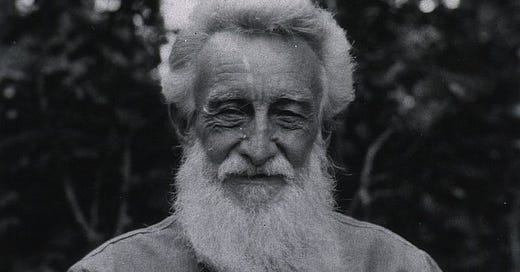



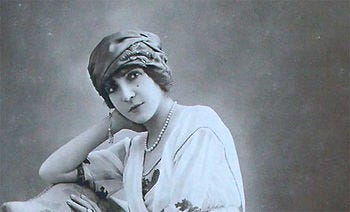


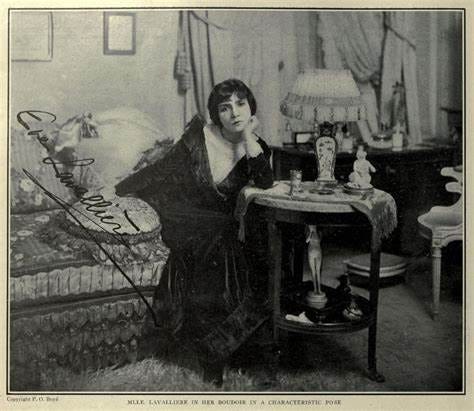
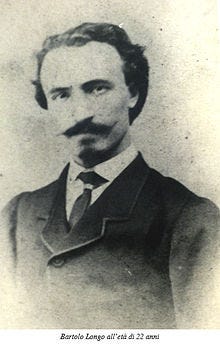
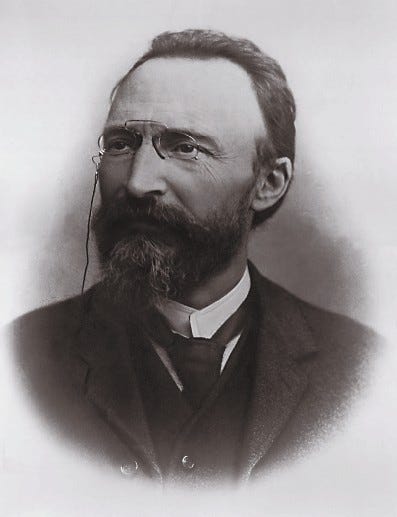

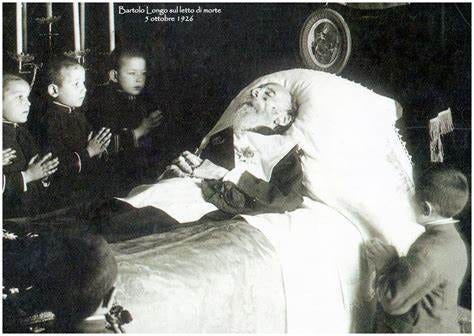
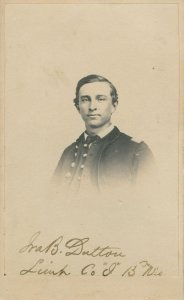

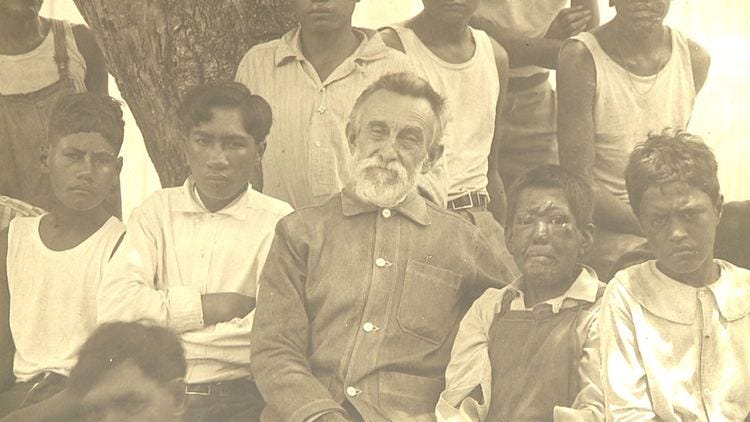

I’d like the source of these so I can print it out for my class. I read part of this aloud, since Blessed Bartolo Longo ( probably a distant relative) has been canonized today.
Thank you Emily